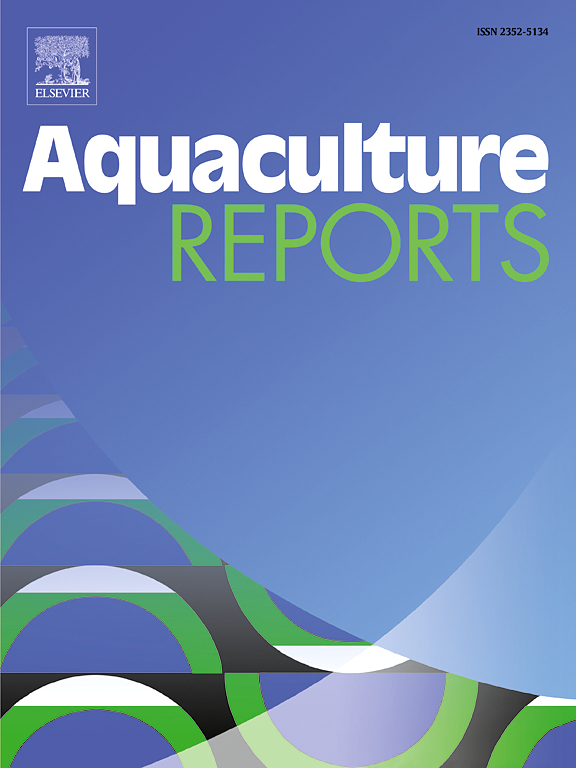Comparing the effect of different carbon sources on growth, blood parameters, immunity, and water quality in Nile Tilapia (Oreochromis niloticus) cultured in a biofloc system
IF 3.2
2区 农林科学
Q1 FISHERIES
引用次数: 0
Abstract
Aquaculture faces significant challenges in maintaining water quality and fish health. This study evaluated the effects of different carbon sources on growth, immunity, and water quality in Nile tilapia (initial weight: 2.8 ± 0.002 g) cultured in a biofloc system over 90 days. Five treatment groups were tested, including a control group without carbon supplementation (T1) and groups supplemented with molasses (T2), vinasse (T3), starch (T4), or rice bran (T5). Results showed that molasses significantly improved (p < 0.05) growth performance, feed efficiency, and hematological parameters, suggesting enhanced oxygen-carrying capacity and immune function. Additionally, molasses increased glucose, triglycerides, and albumin levels, improving liver function and energy metabolism. Immune responses, including lysozyme activity, IgM levels, and phagocytic activity, were significantly enhanced in the molasses group. Antioxidant enzyme activity was higher, and oxidative stress indicators were lower in this group. Histological analysis revealed improved intestinal and gill morphology in fish reared on molasses. Water quality parameters, such as pH, dissolved oxygen, and total ammonia nitrogen, were positively affected by vinasse and starch. Gene expression analysis indicated molasses-influenced genes associated with stress response, antioxidant activity, inflammation, and growth. These findings suggest that molasses is a promising carbon source for biofloc systems, improving growth, health, and water quality in Nile tilapia aquaculture.
求助全文
约1分钟内获得全文
求助全文
来源期刊

Aquaculture Reports
Agricultural and Biological Sciences-Animal Science and Zoology
CiteScore
5.90
自引率
8.10%
发文量
469
审稿时长
77 days
期刊介绍:
Aquaculture Reports will publish original research papers and reviews documenting outstanding science with a regional context and focus, answering the need for high quality information on novel species, systems and regions in emerging areas of aquaculture research and development, such as integrated multi-trophic aquaculture, urban aquaculture, ornamental, unfed aquaculture, offshore aquaculture and others. Papers having industry research as priority and encompassing product development research or current industry practice are encouraged.
 求助内容:
求助内容: 应助结果提醒方式:
应助结果提醒方式:


